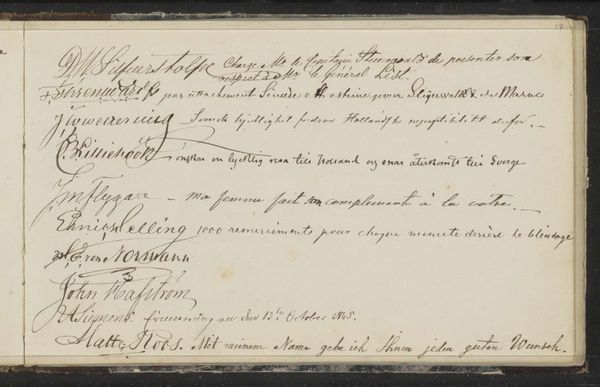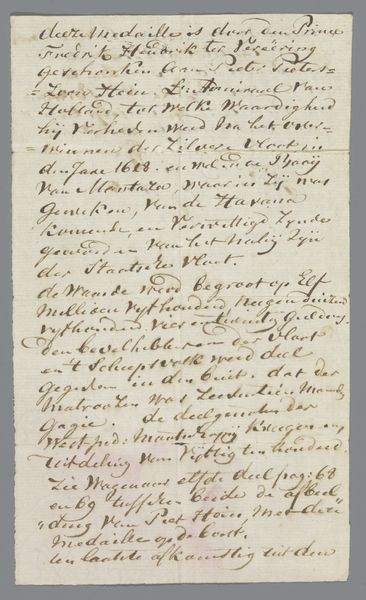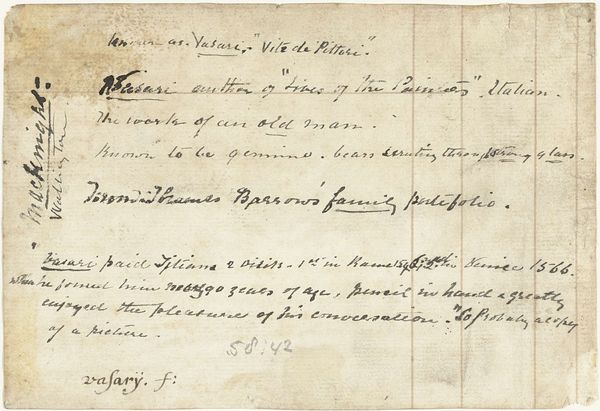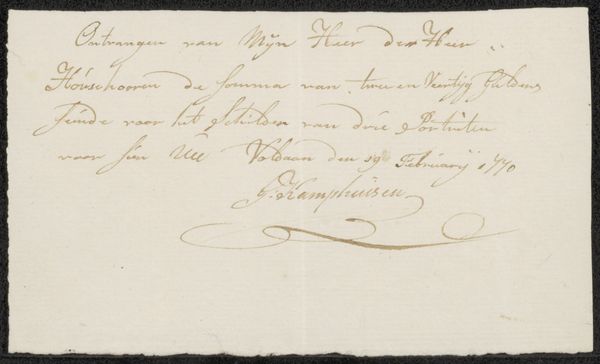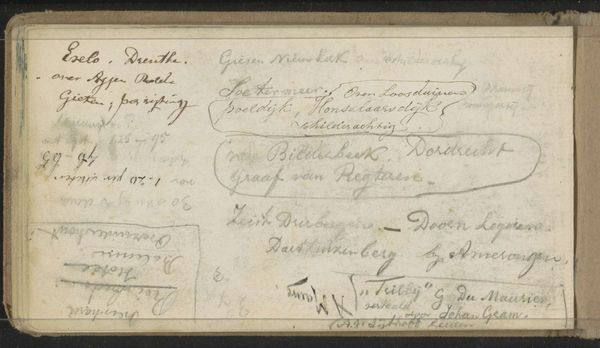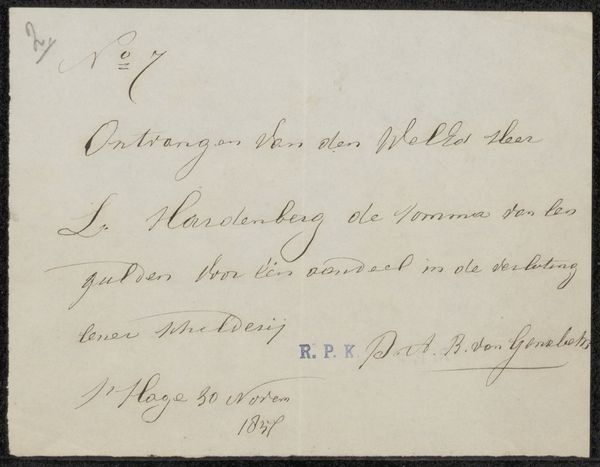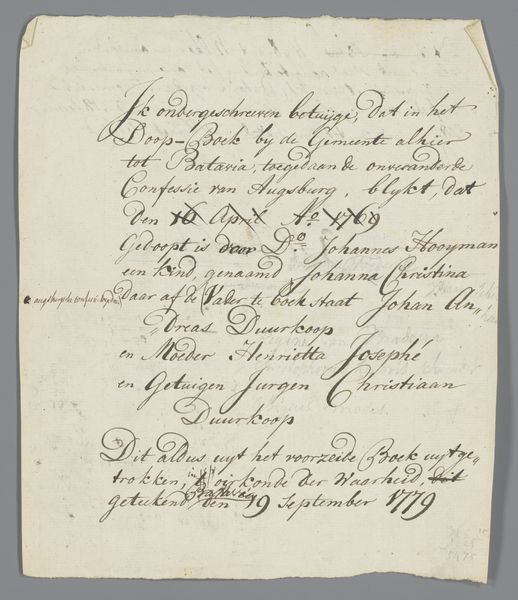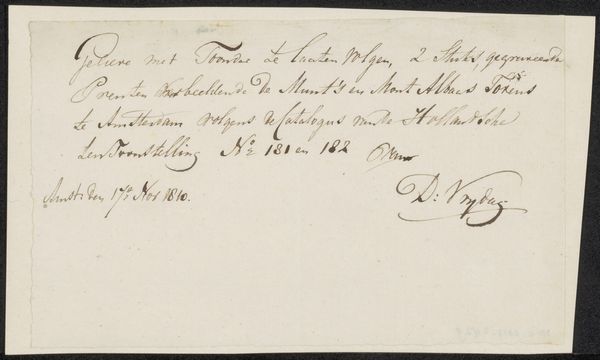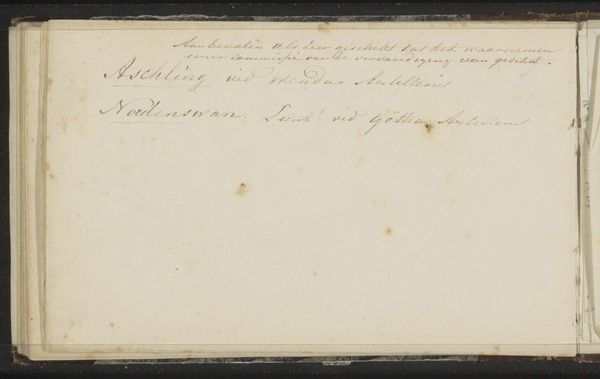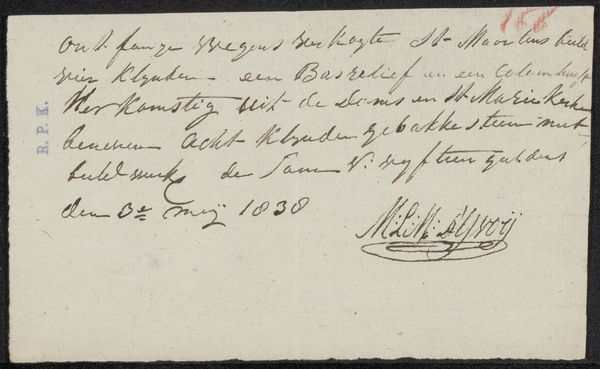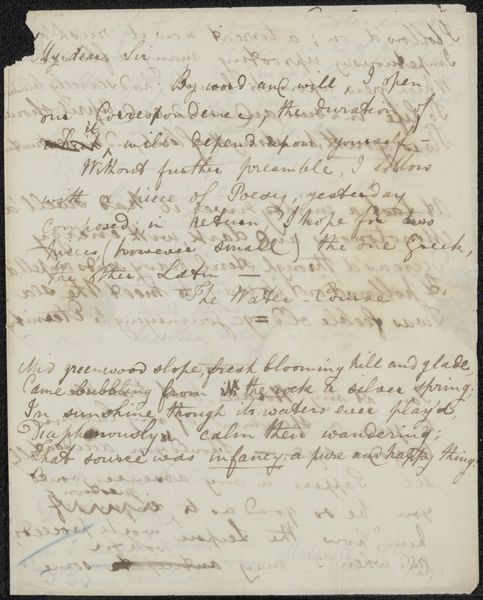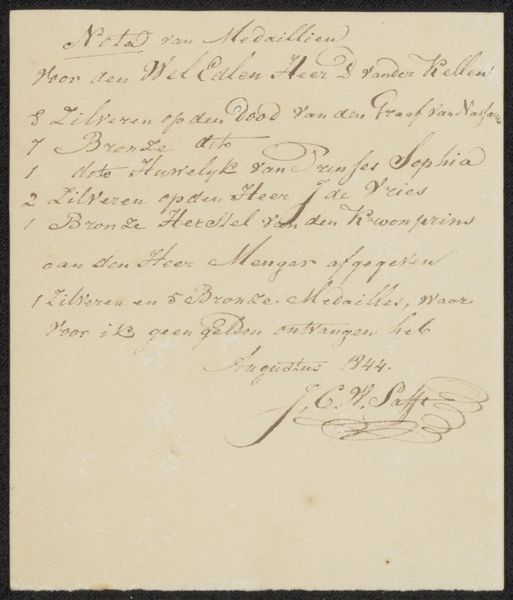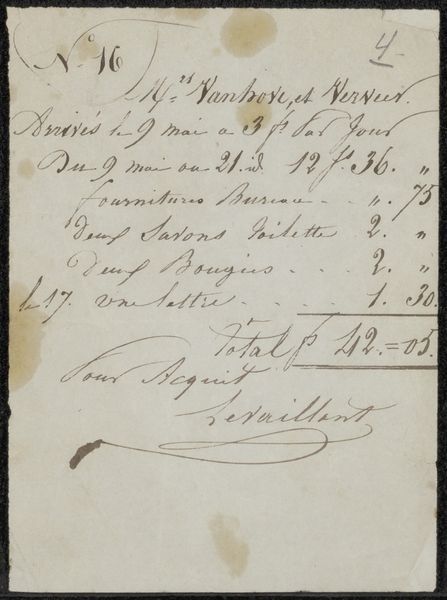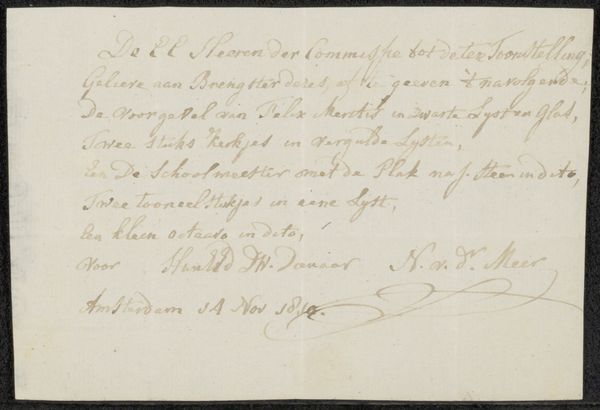
drawing, paper, ink, pencil
#
portrait
#
drawing
#
paper
#
ink
#
pencil
#
academic-art
#
watercolor
Copyright: Rijks Museum: Open Domain
Curator: This delicate work, "Namen van militairen uit Hannover," created between 1845 and 1848 by Christian Heinrich Gottlieb Steuerwald, offers an interesting intersection between art and document. My initial impression is how the handwritten script creates a sort of abstract texture. Editor: Texture indeed, and one born of labor and a very specific material process! It seems a rather functional object, rendered in ink and pencil on paper. I am curious about the nature of that paper; is it machine-made or laid? What type of inks are used and how would each affect the strokes? These decisions shape how the names are presented. Curator: The linear progression and deliberate spacing give a structure— almost like stanzas of a poem, which provides each name and rank its own unique weight. And I love how "Vive le Shrapnells" interrupts the otherwise linear flow. Its jaunty slant breaks the predictable rhythm. Editor: Yes, consider the context— this paper records military names, a clear function! The very act of inscription reflects institutional power, the bureaucracy of warfare even. It speaks volumes about labor: the hand that writes and those whose names are written down as they are managed as material resources in the service of state power. Curator: You are drawn to its role as record, I concede. Yet look at Steuerwald's compositional choices— the elegant flourish of some names contrasted against others, the way the weight of the ink varies, providing contrast. It's clear aesthetic consideration has been employed in organizing this record. We shouldn't dismiss Steuerwald's artful deployment of elements. Editor: True. While aesthetics play a role, understanding its context helps illuminate its broader commentary about labour. These names signify men subject to conscription; it’s a tangible link to social reality of its time, the intersection of military power and lives. It reminds us that artistic choices are intertwined with tangible lives, societal structures, and, yes, even the military apparatus! Curator: Your points bring to light how embedded such forms were with the broader political environment. This artwork prompts one to dig into history and appreciate how individual choices create new avenues for thinking. Editor: Ultimately, the record encourages considering how we assign aesthetic meaning even when functionality seemingly dominates. Examining "Namen van militairen uit Hannover," helps reveal the complex materiality intertwined with social inscription.
Comments
No comments
Be the first to comment and join the conversation on the ultimate creative platform.
